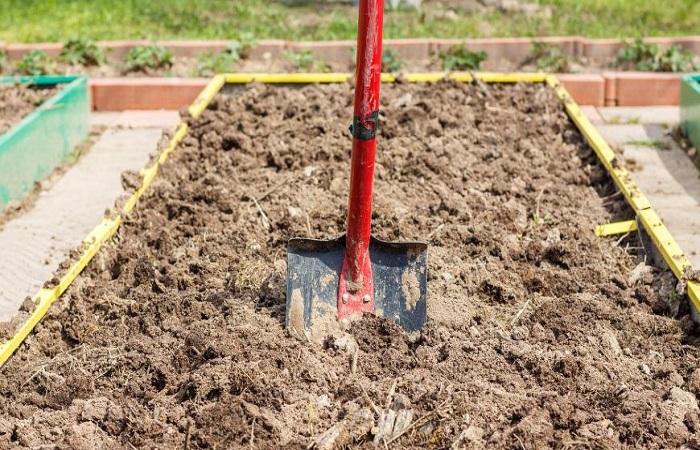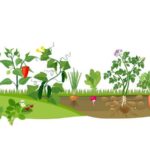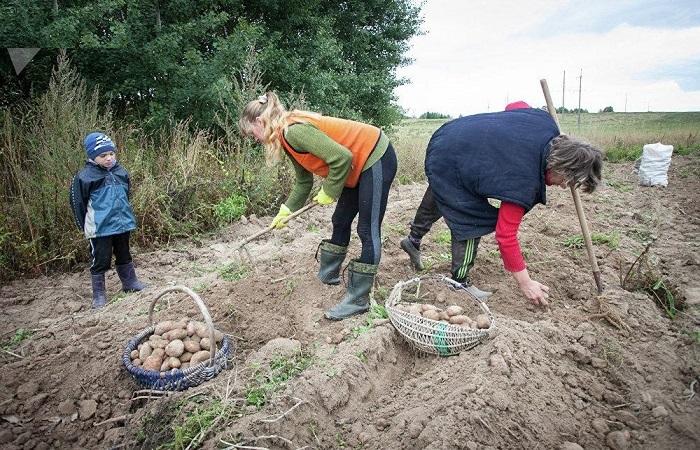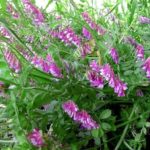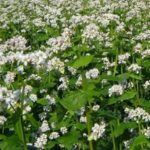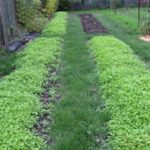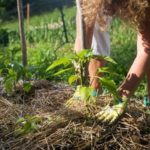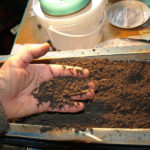Over time, the resources of even the most fertile soil are depleted, and the planted plants begin to bear much less fruit. In this case, it is necessary to take measures and saturate the soil with useful substances. How and with what you can increase soil fertility is worth understanding in advance, since there are several methods, each of which has both advantages and disadvantages. Experienced gardeners recommend using several methods in combination.
What soil needs to be improved
Soil fertility at a site depends on several factors:
- on the mechanical composition of the earth;
- from the organic component;
- from structure;
- from acidity.
It is necessary to improve the soil composition in the garden in the following cases:
- during the development of the site or construction, the fertile layer was completely removed or partially damaged;
- the soil in the garden is too heavy, clayey or sandy;
- planted seedlings develop slowly and are often attacked by pests;
- yields, compared to previous seasons, have decreased significantly;
- The fruits set small and do not have a pronounced taste or aroma.
Activities aimed at increasing soil fertility
There are several ways to help correct the soil on the site and make it more fertile. Which method to choose depends on the gardener’s capabilities and preferences. In order for the measures taken to be beneficial and solve the problem, it is necessary to carry out the procedures correctly and listen to the advice of experienced gardeners.
Worms
Any soil has its own physical properties and functional characteristics, which directly affect such a parameter as fertility. The ability of the soil to bind mineral and organic substances and direct them to the roots of plants, as well as the degree of absorption and retention of moisture, influence fertility. High-quality soil consists of lumps of earth with a diameter of no more than 0.25 mm and has a clear structure. This soil is ideal for growing rich crops.
If you create favorable conditions (frequently water the soil), per 1 cubic meter. A colony of at least 500 individuals will be able to work in a meter of garden, and accordingly, the process of increasing soil fertility will accelerate.
Crop rotation
If you plant fruit plants in the same place at your summer cottage all the time, this will lead not only to soil depletion, but also to other problems:
- disruption of the optimal top layer of soil from which crops draw nutritional components;
- the emergence of a large number of pathogens;
- the growth of weeds that choke the plantings of fruit crops.
When planning crop rotation in the garden, it is necessary to take into account that some plants draw nutrients from the top layer of the earth, while others, on the contrary, from the lower layer; in addition, the crops’ need for nutrients is different.
In order to correctly alternate planted plants, you need to know which family they belong to, because, as a rule, in this case they have similar needs for microelements and a tendency to diseases. In addition, it is impossible to plant the same bed with crops with a high need for nutrients from year to year, so this parameter is first studied:
- Plants such as green peas, radishes, onions, lettuce and herbs are characterized by a low need.
- The average requirement is for cucumbers, beets, tomatoes, eggplants, melons and climbing beans.
- Potatoes, celery, cabbage, spinach, pumpkin and asparagus consume the most nutrients from the soil.
They adhere to the following rule when planting crops: in the first year, plants with the highest need are planted, in the second and third - with medium and low. After this, an increased dose of fertilizer is added to the soil and plants from the third group are placed again.
Planting medicinal plants
Medicinal herbs help make the land fertile; they are planted alternately in each bed so as not to take up the entire garden. Such crops include nettle, garlic, wormwood and marigold. The roots of these plants nourish the soil with useful substances, such as nitrogen and a whole range of microelements.
Heat treatment
It is possible to maintain soil fertility in a personal plot through heat treatment, but it must be remembered that this is a radical method that is used only as a last resort. The fact is that under the influence of high temperatures, not only pathogenic microorganisms die, but also beneficial bacteria, which are necessary for the full development of crops. In addition, this method is quite labor-intensive and is not used over large areas. Most often, heat treatment of the soil is carried out in small beds or in a greenhouse.
This procedure is carried out in two ways:
- spill the ground with water heated to 90 degrees;
- Lay a thin layer of straw on the surface of the ground and set it on fire, observing safety rules.
Adding organic matter
Organics are substances that increase soil fertility and are of natural origin. There are several types of fertilizers that are most often used by gardeners:
- Manure. This fertilizer, which contains a basic set of macro- and microelements, is used in the fall when the garden is being dug up.Per square meter of plot you will need 5 kg of manure. In addition to increasing fertility, the fertilizer neutralizes acidity to neutral levels and makes the soil loose. It is not recommended to apply manure directly into the holes when planting plants, as it can burn the roots of the crops.
- Humus. In addition to rotted manure, the fertilizer contains organic residues and fallen leaves. Fertilizing is characterized by an increased concentration of nitrogen. To increase the efficiency of fertilizing and saturate it with minerals, wood ash is added to it.
- Bird droppings. The fertilizer contains calcium, nitrogen, phosphorus, manganese and potassium. Before use, it must be diluted with water.
Selection of neighbors
The correct selection of neighbors is also included in the system of measures aimed at increasing soil fertility. The essence of this principle is that a satellite crop is planted next to each plant, as a result of which the likelihood of developing diseases is reduced and the quality of the crop is improved.
Soil leave
Restoration of soil fertility is facilitated by rest; in this case, either the entire garden or part of it is not sown, but fertilization, weeding and other agrotechnical measures continue. Before winter, the area is dug up so that the top layer of soil is at the bottom.
Green manure
Planting green manure plants helps restore the quality of the soil on a personal plot.
Of the best green manures, gardeners note the following options:
- White mustard.An annual plant belonging to the Cruciferous family, it is grown by sowing seeds. The advantages of this crop include the following: rapid restoration of poor soils and enrichment of the soil with nitrogen and phosphorus, improvement of soil structure and loosening, as well as prevention of leaching of useful substances from the soil during heavy rains.
- Vika. This green manure is recommended to be mixed with oats when sowing; its main advantage is rapid growth and the formation of abundant green mass. To get the result, the crop is mowed until seeds form and plowed into the ground to rot.
- Phacelia. The advantages of this green manure are its resistance to short-term cold snaps and drought, as well as the ability to sow seeds both in open ground and in a greenhouse. During a season, you can grow several crops, which are plowed into the soil to increase fertility.
- Buckwheat. The crop is a good precursor for fruit plants, but it must be remembered that buckwheat loves warmth, so it is not suitable for every climate zone.
Normalization of acidity
You can get rich harvests by normalizing the acidity of the soil. Before adding substances, an analysis is carried out using both store-bought and improvised means.
The pH is increased using crushed lime or dolomite flour. Alkaline soil is corrected with humus, compost and rotted sawdust.
Plastering
To prevent problems with soil salinity in the garden and, as a result, a decrease in yield, gypsum is carried out. The preparation for the procedure is purchased at a gardening store and used according to the attached instructions.
Increasing soil fertility is a process that takes more than one day, so it is important to constantly monitor the condition of the soil in your area and make timely adjustments.

